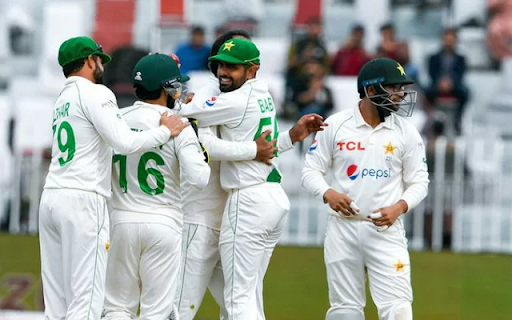
The first Test match between Australia and Pakistan, held in Rawalpindi, ended. The
pitch utilised for the game drew a lot of flak from the cricketing community since it provided no
support for the bowlers. However, the Pakistan Cricket Board (PCB) does not believe the
International Cricket Council (ICC) will give it a 'poor' or 'not up to the mark' rating for the
game's most extended format.
The Rawalpindi surface was also characterised as 'dead' by Australia hitter Steve Smith, who scored 78 off 196 balls. According to ICC criteria, a Test wicket should feature seams, bounce, spin, and carry at various phases to provide an equal playing field for batters and bowlers, with the bowlers slightly favouring them.
A pitch is called "bad" if it prevents bowlers from having a fair fight with the bat.
The game's ICC match referee, Ranjan Madugalle, might report it to the governing body for not meeting Test cricket standards. A PCB source, on the other hand, disagrees. The Rawalpindi Cricket Stadium will suffer three demerit points if the match referee rates the wicket poorly. Any stadium that receives five demerit points over five years is barred from hosting international cricket for a year.
1187 runs were scored in the match, and only 14 wickets were taken throughout five days. After winning the toss, Pakistan captain Babar Azam chose to bat first on a belter of a pitch. The choice was also vindicated as the hosts amassed 476/4 before declaring their innings. Senior hitter Azhar Ali and opener Imam-ul-Haq scored centuries in the first innings.
In response, Australia's batters chipped in with half-centuries from all four leading scorers, with Usman Khawaja just missing out on a well-deserved century by three runs. Marnus Labuschagne hit 90 runs off 158 balls as well.
On the last day, Australia was all-out for 459 runs. In Pakistan's second innings, the visitors failed to take a single wicket as both Imam-ul-Haq, and Abdullah Shafique stitched a 252-run opening combination, scoring centuries in the process. Against Australia, the opening combination set a new record for the most runs scored by an opener pair in partnership.
The Rawalpindi surface was also characterised as 'dead' by Australia hitter Steve Smith, who scored 78 off 196 balls. According to ICC criteria, a Test wicket should feature seams, bounce, spin, and carry at various phases to provide an equal playing field for batters and bowlers, with the bowlers slightly favouring them.
A pitch is called "bad" if it prevents bowlers from having a fair fight with the bat.
The game's ICC match referee, Ranjan Madugalle, might report it to the governing body for not meeting Test cricket standards. A PCB source, on the other hand, disagrees. The Rawalpindi Cricket Stadium will suffer three demerit points if the match referee rates the wicket poorly. Any stadium that receives five demerit points over five years is barred from hosting international cricket for a year.
1187 runs were scored in the match, and only 14 wickets were taken throughout five days. After winning the toss, Pakistan captain Babar Azam chose to bat first on a belter of a pitch. The choice was also vindicated as the hosts amassed 476/4 before declaring their innings. Senior hitter Azhar Ali and opener Imam-ul-Haq scored centuries in the first innings.
In response, Australia's batters chipped in with half-centuries from all four leading scorers, with Usman Khawaja just missing out on a well-deserved century by three runs. Marnus Labuschagne hit 90 runs off 158 balls as well.
On the last day, Australia was all-out for 459 runs. In Pakistan's second innings, the visitors failed to take a single wicket as both Imam-ul-Haq, and Abdullah Shafique stitched a 252-run opening combination, scoring centuries in the process. Against Australia, the opening combination set a new record for the most runs scored by an opener pair in partnership.